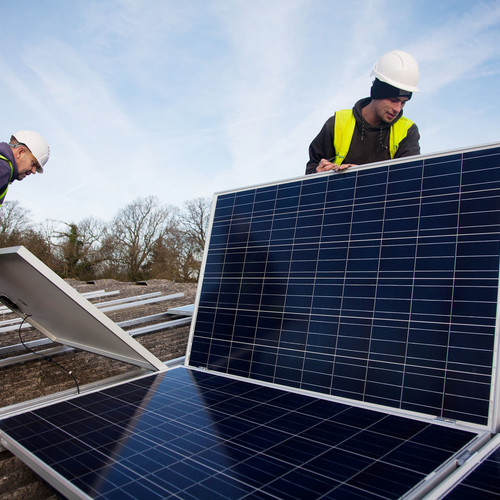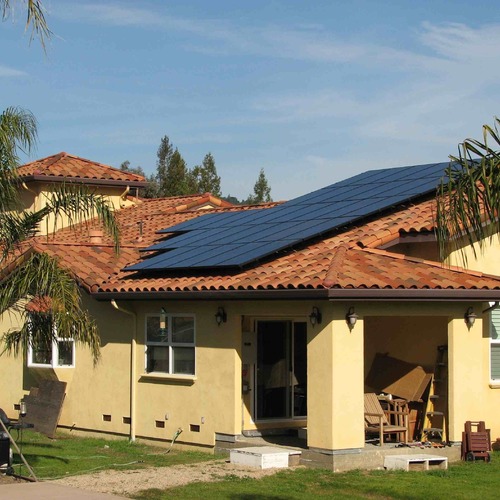
Image Credit: Lawrence Berkeley National Laboratory
Maine, New Jersey, New Hampshire, and Arizona are among the states where buyers are most likely to find the best bargains on small-scale photovoltaic (PV) systems, according to a new study from Lawrence Berkeley National Laboratory (LBNL).
Published this month, the study was aimed at identifying the characteristics of low-priced PV systems. “Ultimately,” the authors asked, “what can be done to reproduce or facilitate those conditions more broadly to drive down U.S. PV system prices?”
Researchers from LBNL, three universities, and the National Renewable Energy Laboratory looked at the characteristics of the least expensive PV systems, based on a database of 40,000 systems in 15 states (all installed in 2013). These PV systems had a rated capacity of between 1 and 15 kilowatts, were both residential and commercial, and included systems owned by third parties.
“Despite impressive recent cost reductions, installed prices for small-scale PV systems in the United States continue to show wide pricing differences depending on the location of the installation, the installer, the components of the system, and other factors,” co-author Ryan Wiser said in a statement. “Our work seeks to pinpoint the characteristics of recently installed PV systems at the lower end of the observed solar price range.”
The team used several definitions for “low-priced” (or LP) systems, but relied chiefly on one describing them at or below the 10th percentile in dollars per watt — that is, cheaper than 90% of all systems. Researchers established the threshold for a low-priced system at $3.46 per watt.
Overall, the authors noted a steep decline in system costs between 2000 and 2013, from an average of $13.37 per watt to $4.77 per watt. The average system size has doubled in capacity, from 3 kilowatts to 6 kW.
Factors that bring down prices
State-to-state differences were significant. In Maine, small-scale solar is 51 times more likely to be low-priced than in California, which was used as the reference state in the report’s statistical analysis. In Arizona, systems were 23 times more likely to be low-priced.
Low-priced systems were more likely to have these attributes:
- Larger in size and self-installed.
- Installed in markets with fewer active installers, in areas with lower household densities.
- Include Chinese-brand panels and thin-film panels.
- Less likely to have micro-inverters, battery backup, or tracking mechanisms.
- Less likely to use building-integrated components.
- Less likely to be installed in new construction.
The authors noted that residential PV capacity increased by a factor of eight between 2009 and 2014 as installed prices fell by 50%. In 2014, 32% of all new U.S. electrical generation capacity came from PV; 20% of that was residential.
“Widespread adoption of PV will depend, in part, on the economics of those systems,” Wiser said. “By studying the attributes of low-priced PV systems, we can begin to identify what can be done to facilitate those conditions and thereby drive down PV system prices nationwide.”
To learn more about the report, you can register for a webinar scheduled for January 25 at 10 a.m. Pacific (1 p.m. Eastern).
Weekly Newsletter
Get building science and energy efficiency advice, plus special offers, in your inbox.















4 Comments
Impact of rebates?
What are the differences between the states with regards to rebates?
Is it just an issue of leasing vs buying where the systems in Maine are purchased and those in CA/AZ are predominately leased?
Are the manufacturing costs of the cheaper foreign systems being subsidized by their government?
Prices are not all the same
I've written several comments in the past about folks not explaining the quoted prices for solar power. Does the quoted price includes installation? Also, there are huge differences for panel qualities, for installations on pitched or flat roofs, shingle, clay or metal roofs, etc. etc. Please explain what is the price base of your quotes so we can actually compare.
I think I'm going to save this comment and copy/paste every time I need it.
Response to Armando Cobo
Armando,
The LBNL researchers clearly explain the prices they studied.
The researchers wrote, "The transaction price is the total pre-incentive installed price of the PV system. It includes hardware costs (modules, inverter, wiring, support structure, and meters) as well as “soft costs” (labor, marketing, insurance, permitting, and other overhead) and installer profit. The price excludes government subsidies, such as rebates, tax credits, and renewable energy certificates."
Response to Armando
You might add to your list: Average local labor cost (or area's cost-of-living) and components used.
Cheaper labor in red states and rural areas, and probably less pricey components used. Everyone knows CA cities are expensive in cost of living, no different for any type of construction work.
Of course, batteries and tracking systems would up the price, as noted in the article. Maybe the data could be re-analyzed to subtract out these options.
The percent of systems below some threshold is an odd statistic. Mean and median are more typical summary descriptive statistics. They could be correlated with average or mean income, cost-of-living, average construction labor cost, etc.
Log in or create an account to post a comment.
Sign up Log in